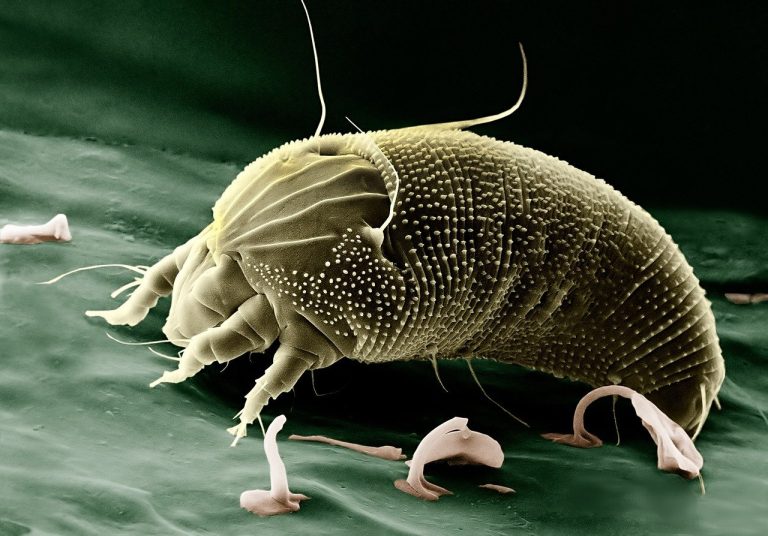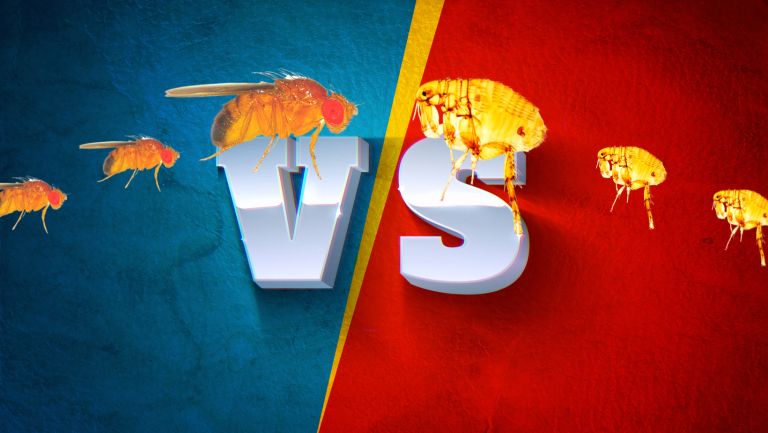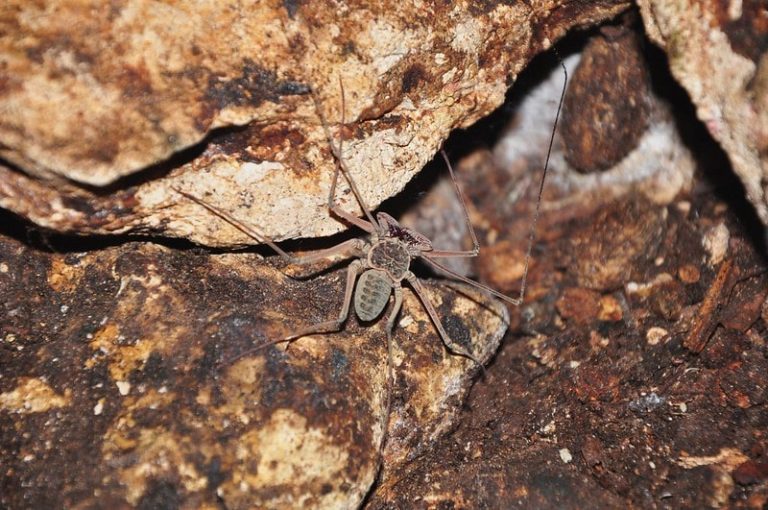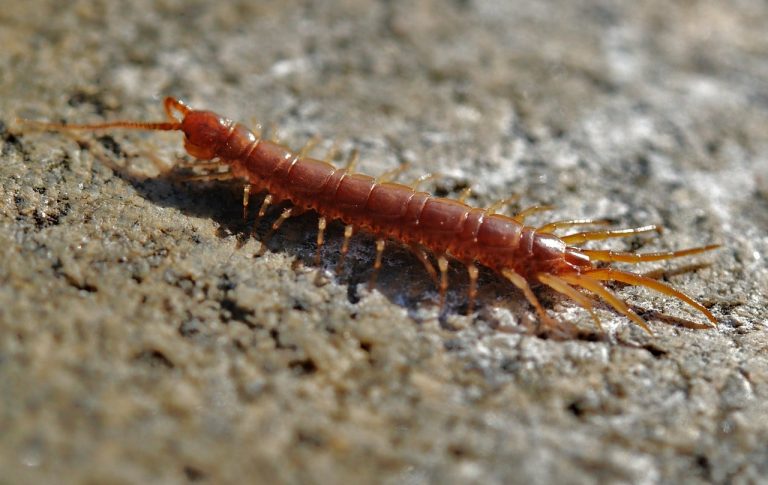How to Get Rid of Roaches? Natural, Herbal, and Chemical Treatment
Roaches are insects of the order ‘Blattodea’ which also includes termites. Roaches date back as long as 320 million years, think, the ‘Carboniferous’ period. Roaches are general insects with chewing mouthparts and are among the most primitive of living Neoptran insects.
However, the common roaches are termed as dirty pests, though, they are not offensive.
Some species like ‘German cockroach’ shows the social structure as they need common shelter, social dependence and information sharing, and kin recognition. Roaches live in a wide range of habitats around the world.
Currently, 4600 species and 460 genera are present worldwide, with the most common type of roaches as listed below –
- German Cockroach (Blattella Germanica) –
- One of the most common species
- Have 13 to 16 mm long and pale brown with two dark-brown strips behind the head
- Lives up to 12 months and produce more eggs than other species
- American Cockroach (Periplaneta Americana) –
- They are the largest cockroaches found indoors
- Adults can grow up to 53 mm long
- Have reddish-brown to brown with light yellow bands behind head
- Both males and females have wings and can fly short distances
- Lives up to 2 years and found around food in home
- Brown-banded Cockroach (Supella Longipalpa) –
- Grow up to 13 mm
- Females have reddish-brown to dark-brown wings
- Males will have dark brown wings at the base and lighter towards the tip
- Only males can fly
- Both males and females have light yellow bands across their bodies
- When disturbed, they jump
- Have an average life span of 3 to 11 months
- Oriental Cockroach (Blatta Orientalis) –
- Have glossy, dark brown, or black bodies
- Females grow up to 32 mm while males measure less than 25 mm long
- Both males and females are not capable to fly
- The life span is up to 6 months.
- They primarily feed on decaying organic matter.
How to Get Rid of Indoor Roaches?
If roaches are found in your home, then, it is high time for sanitation. You must not allow substantial roaches’ growth in the home because once they find the way they will start growing rapidly. Along with the most common species of German, American, Brown-banded, and Oriental roaches, there are other species like Wood, Asian, Cuban, and Pale-boarded field cockroach. They are often found in warm areas of kitchen and bathroom, as well as cool, damp, dark places, closets and dressers, woody areas, doors, windows depending upon the type of roach
Natural Home Remedies to Get Rid of Indoor Roaches
Here, we will discuss some of the natural remedies to begin with.
- Hot Water and Vinegar – Mix 1 part of white vinegar with hot water, stir well and wipe slabs, cook tops, with this solution.
Pour this solution into kitchen drains at night; it will disinfect the pipes and drains. This can prevent the roaches to enter.
- Hot Water Lemon and Baking Soda – Prepare a mixture of 1 lemon, 2 tablespoon baking soda in 1-liter hot water, stir well.
Consider pour the mixture into the drain or wash the area below the sink and slabs in the kitchen. This will keep the roaches away. - Boric Acid and Sugar – Make a proper mixture of boric acid and sugar powder. Spread it at the places where roaches breed.
The sugar works as bait while boric acid kills them. It will limit the activity of roaches in your home. - Essential Oils – The aroma of essential oils like peppermint and lavender oil will keep the roaches away. Just spray some essential oils around the cabinets and tops in the kitchen.
The aroma will play its role in keeping the roaches away. - Cucumbers – Cockroaches hate the aroma and essence of cucumber.
Yes, this is true and thus, you can keep roaches away just by placing some slices around the places from where they come. - Neem Extracts – Neem works miraculously on bugs and roaches. Keep some leaves of neem in the activity area and you will see the results in just 3 days.
Similarly, you can try neem oil spray mixed with hot water to stop the breeding of roaches in the kitchen. - Cinnamon – Sprinkle some fresh ground cinnamon powder around the kitchen. You will see amazing results as the strong essence of cinnamon is not liked by roaches and other bugs.
So, the roaches will stop climbing your slabs and cabinets. - Bay Leaves – Crush some bay leaves and sprinkle them in kitchen cabinets and around.
Also, you can boil some leaves and spray that water around where you see the activity. The strong smell of the bay leaves keeps the roaches away. - Fabric Softener – If you have a little infestation in your home and want to eradicate roaches, then, mix fabric softener with water and keep it in a spray bottle.
Whenever you see roaches, spray directly on it and it will die. - Catnip – Being a great insect repellent, it keeps away roaches from your home.
Add 8 teaspoons of Catnip to 1 liter of boiled water. Once it cools down, spray it around your house. This will work wonders to stop the entry of roaches. - Dish Wash Soap – Spraying a mixture of dish wash soap and water directly on roaches will make them suffocate immediately.
However, this will work on individual pests, so, you need to target each one separately and need to spray directly on it, or else it won’t kill roaches. - Onions and Baking Soda – Cut ample of onions in dice shape, sprinkle baking soda on it, and place it at the activity areas of roaches.
You can witness the fast diminishing of roaches since these combinations kill them effectively. - Duct Tape – Place some food bait on duct tape’s sticky surface and keep it around your home.
It will let the roaches eat food but get stuck on tape and kill them overnight. - Diatomaceous Earth and Sugar – Mix equal parts of DE and powdered sugar and place it around your house. Opt for DE of food-grade. Spread as a light coating at all areas of roaches’ activity. This will keep away the roaches.
However, take care not to use excess DE to avoid breathing it. You can wear a mask while you use it. - Borax – Use laundry product borax with sugar or cocoa and sprinkle it around the most active areas. It is a good roaches’ eliminator.
How to Get Rid of Roaches With Pets in the House?
While we discuss the home remedies to kill or keep the roaches away from home, it is important to understand that all the above remedies are not pet-safe. That means in some remedies, there is a chance that your pet may also eat the bait you placed for roaches.
You must opt for different, pet-safe remedies if you have pets at home. Also, you must ensure to keep pet food safe and free of traces on the floor. We will, in short, see the remedies that you can adopt to keep roaches away when pets are at home.
- Cockroach Traps
Various traps with different ingredients are available to catch and dispose of roaches.
Or you can also use a home-made trap to catch the roaches. Any bowl or cup with good height can be used to place food bait and then, make the sides slippery by applying oil or grease, so that the roaches could not climb back and get trapped.
- Baits
You can place market baits out-of-the-way of pets. These baits are in sealed condition so your pets, anyway, could not get to them.
Place the baits at appropriate areas to lure roaches to eat them. This will kill the roaches.
- Boric Acid
Boric acid in small quantities cannot harm pets even if they ingest it but at the same time can work well over small pests like roaches.
Place it in the cracks in-wall or corners of the house. The boric acid will affect the roaches while grooming as it gets attached to their bodies. It gets ingested while grooming.
- Diatomaceous Earth
Diatomaceous Earth, a food-grade one preferred, is an effective insect repellent. It does not harm your pet even if it is ingested little. DE absorbs the waxy covering of the insect’s body, causing dehydration.
Chemical Treatment to Get Rid of Indoor Cockroaches
Cockroaches are high-risk pests to have in your home and business premises. The risk is even higher in the food business sector, from contaminating food and causing property damage to a serious threat to health.
However, there are several chemicals that can be used to eliminate the roaches’ existence. The important thing to remember is that this must be done by the expert and licensed authorities only since it contains a lot of insecticides that are harmful to human health.
- Avermectin – High acute toxicity in pure form.
However, the used concentration in baits is less than 0.01% and has low acute toxicity. Take note that it is toxic to the nervous system and developing fetus at low doses. It is not absorbed through the skin much, but it is toxic to aquatic animals.
It can be used in the form of gel, solution, aerosol, granular, impregnated materials, and dust.
- Borates – It contains Borax, Boric acid Sodium metaborate.
It has low acute toxicity and cannot be absorbed through skin. It is toxic to plants. Consumption of a small quantity daily for months reduces sperm counts in animals.
It is used in the form of gel, dust, paste, granular, solution, and aerosol.
- Diatomaceous Earth – Contains crystalline silica. Causes lung irritation when inhaled. Long-term exposure to DE dust is associated with lung cancer.
It can be used in the form of dust.
- Fipronil – Moderately acutely toxic by ingestion, but does not absorb much through the skin. Toxic to the nervous system and classified as a Possible carcinogen by US EPA. High toxicity to birds and aquatic life.
It can be used in the form of powder, pellets, gel, impregnated materials, solution, and granular.
- Hydramethylnon – Low acute toxicity to humans. Not absorbed much through the skin. Toxic to the developing fetus and interferes with reproduction at moderate doses. High toxicity to aquatic life.
It can be used in the form of granular, pellets, gel, and solution.
- Indoxacarb – Has moderate to low acute and chronic oral toxicity to humans. High toxicity to aquatic life.
It can be used in the form of impregnated materials, gel, solution, and granular.
- Insect Growth Regulators – (Hydroprene, Methoprene, Pyriproxyfen) Very low acute and longer-term toxicity to humans. High toxicity to aquatic invertebrates. Most products also contain insecticides, usually pyrethroid.
It can be used in the form of impregnated materials, aerosol, and solution.
- Neonicotinoids – (Acetamiprid, Clothianidin, Imidacloprid, Thiamethoxam) Moderate acute toxicity to humans and are absorbed through the skin to some extent. Toxic to the nervous system. Imidacloprid reduces sperm counts in laboratory animals with long-term exposures. Highly toxic to aquatic invertebrates and bees.
It can be used in the form of aerosol, impregnated materials, gel, granular, and solution.
- Pyrethroids – (Allethrin, Bioallethrin, Cyfluthrin, Cyhalothrin, Cypermethrin, Deltamethrin, Esfenvalerate, Permethrin, Tetramethrin, Tralomethrin) Moderate acute ingestion, and inhalation toxicity. Sensitizer, causing allergy and asthma in some people. Toxic to the nervous system. Highly toxic to aquatic invertebrates and bees.
Most products also contain a synergist that increases the insecticidal activity of the pyrethroid. Piperonyl butoxide (PBO) and N-octyl bicycloheptene dicarboximide are typical synergists and both are possible carcinogens as per US EPA.
It can be used in the form of solution, aerosol, and granular.
- Organophosphates – (Acephate, Chlorpyrifos, DDVP, Malathion, Naled, Propetamphos) High acute toxicity to humans at low concentrations. Toxic to the nervous system, especially for children. Highly toxic to aquatic life.
It can be used in the form of granular, impregnated materials, solution, and aerosol.
- N-Methyl Carbamates – (Carbaryl Propoxur) High acute toxicity to humans at low concentrations. Toxic to the nervous system, especially for children. Highly toxic to aquatic life.
It can be used in the form of solution, granular, impregnated materials, and aerosol.
How to Get Rid of Outdoor Roaches?
If you don’t want roaches roaming around your garden like it’s their own, restrict their entry at the first line of defense itself. Roaches like moist, dark places and they eat anything including each other. The most useful tip to keep roaches away is to keep outdoor completely free of food particles, small dead ants or similar, leaves, and others. The most common roach found outdoor is the American cockroach. They prefer areas that are warm, and damp like flowerbeds and under mulch. They live on trees thereby got the name ‘palmetto bugs’.
One needs to ensure to empty the trashes regularly. Do not leave paper, cardboard as a shelter for roaches. You can keep the roaches from entering your outdoor by simple natural home remedies as listed below –
- Diatomaceous Earth – It can be sprinkled around the areas of entry of roaches, especially hidden areas like pavement or below steps. The DE cuts the waxy exoskeleton of roaches and kills them within 48 hours.
- DIY Trap – Prevent the roaches by keeping the beer-soaked bread pieces in an empty coffee can and apply Vaseline on the top inside edge.
Place the trap in the infested area.
- Bay leaves – Roaches hate bay leaves and avoid the areas where bay leaves are spread. Keep some bay leaves around the outdoor area near the entrance to prevent the roaches.
- Garlic – A strong essence of garlic is not the favorite of most of the insects. Leave some garlic with exposed peels around the corners of the outer space.
It will keep the roaches away.
- Cucumber Slices – Cucumber slices work as wonder. They can keep the roaches away from your house.
It acts as a great roach repellent.
- Boric Acid – Mix equal parts of boric acid and powdered sugar, and put them around the home.
Due to sugar, the roaches will get attracted and will eat the mixture but will die because of toxic boric acid.
- Soapy Water – Spray the soapy water directly on the roaches and you will see them getting killed. But this will need much effort if you want to kill them outdoors.
If there is a small infestation, it works.
- Nepetalactone – It is non-toxic for humans and pets. Spray powder around or mix with water and spray around the area of activity.
- Neem Extracts– Spread some neem leaves around the yard area and you will see the roaches get eradicated in 3 days.
- Water Trap – Cut the plastic bottle from the neck. Fill it with water and coffee brew. Keep the cut upper portion inverted in the bottle. Place around the activity area.
The aroma of coffee will attract roaches but they will get trapped inside the water.
- Fabric Softener – Spraying of fabric softener will pose difficulty in breathing to roaches and they will die of suffocation.
- Traps – This contains bait placed on a sticky surface. When the roaches are lured by the bait and eat it, it gets stuck on the sticky surface.
This makes the roaches impossible to get free.
- Cinnamon – Sprinkle cinnamon around the entrance of the yard or outside the door. The strong smell works as roach repellent.
- Hot Water Lemon and Baking Soda – In 1-litre hot water, squeeze 1 lemon and add 2 teaspoons of baking soda. Spread it around the outskirt of the house to prevent roaches entry.
However, you may need more quantity based on the infestation.
Onions and Baking Soda – This onion bait laced with baking soda is effective and roaches get killed in a quick time.
Chemical Treatment to Get Rid of Outdoor Roaches
Apart from the home remedies, we need to apply other treatments, if the infestation is heavy. As the natural remedies have limitations on the control, we must adopt more professional methods if the need arises.
- Aerosols – The active ingredient is dissolved in a solvent with pressure from a gas propellant. When it comes directly in contact with roaches it is highly effective.
In general, the concentrations of these will be less. It is easy to use and readily available. Care is to be taken while using because it is harmful.
- Foggers – Foggers are readily available and ready to use. The entire quantity is released in a single application.
Care to be taken of airborne and fallen droplets. While using, all flames must be extinguished.
- Botanicals – Naturally occurring insecticides processed and concentrated. Nicotine sulphate, a botanical insecticide must be used carefully as it is more toxic to humans than other synthetic insecticides.
- Emulsifiable Concentrates – Formulated emulsifiable concentrates contain a lower concentration of active ingredients. They are easy to mix and need a little stirring.
- Ready-to-use sprays – Formulated ready-to-use sprays are already diluted by the manufacturers, so, it can be used directly. They are safer as there is no mixing of concentrated insecticides. Care must be taken to avoid creating potential hazards due to leakage.
- Wettable Powders – These powdery formulations are added to water. A wetting agent helps the active ingredients to mix with water.
The advantage of wettable powders is that if it is sprayed on wood, the residual activity keeps the powder on the surface but the water penetrates the wood. This results in great effectiveness.
- Cockroach Baits – Place the bait stations having active ingredients near the areas where the roaches are active. Roaches will reduce in some days while they eat the bait.
Try different types of bait to avoid the roaches becoming resistant to one type.
- Oxypurinol and Xanthine – Oxypurinol is a metabolite of a drug and Xanthine is a natural substance found in all living things. When combined, these two work to block the formation of uric acid, which roaches need for metabolism and reproduction.
Thus, the population of roaches gets stopped.
- Sulfuramid – Formulated as a cockroach bait, Sulfuramid is another active ingredient that delays the action on roaches. It has low toxicity to humans. It is available in tamper-proof bait stations.
- Boric Acid – It is formulated in both gel and granular form. It is a white powder toxic to roaches, ingesting which, they choke and they die.
How to Get Rid of Roaches in Your Yard?
Even if you have taken a lot of care to eliminate roaches, you still have their existence in the yard or garden, right?
Well, it happens.
You might have controlled the activity completely inside the house, but the yard being a vast area gives some entry point to the roaches to make their way. There may have been some loophole left in the first line of defense.
For this issue to solve, we will discuss some important tips and methods –
- Diatomaceous Earth, the non-toxic powder is made of ground fossilized sea-shells. The powder penetrates the body of the roaches, making them dry and die.
- Make sure to cover all the areas where pests can hide such as under shrubs, trees, dense fossils, or long grass.
- Use of toxic gels, sprays, sticky traps, and baits stations or a combination of them to reduce the population of roaches.
- Parasitic wasps, the beneficial insects are the long-term natural solution to roaches in the yard or garden.
- Remove any food or water sources that will harbor the roaches. Flower pots, watering buckets which are the source of water are to be removed. Don’t keep any water stagnant in the yard.
- Repair the leakages, especially pipes and hoses. The water puddles attract the roaches and you can often find them roaming there.
- Keep the drains clean and finish watering the plant before sunshine to get the area dry.
- Fallen fruits, leaves must be removed from the garden or yard frequently.
How to Get Rid of Roaches From Trees?
The American cockroach, Australian cockroach, and Smokeybrown cockroach reside in trees and use trees as hiding places.
Cockroaches can make their way into the house through tree branches. Tree-dwelling roaches generally infest the attics and two-stories, but they burrow below shingles and sidings. Roach infestation is difficult to stop as a single roach produces 40 to 45 more.
Ways to Get Rid of Roaches From Trees
- Keep a debris-free garden, yard, and landscape by picking up garbage and leaves. Consider removing the weeds to eliminate hiding places of roaches.
- Trim the near-house tree to avoid the branches to rest in the balcony or roof.
- Do routine check-up of your windows, balcony, seals, and weather stripping for the activity of roaches.
- Clean the plant debris regularly and keep the things of attraction away from the trees and yard.
How to Find Roaches Nests?
Cockroaches have 3 life-cycle stages: egg, nymph, and adult. An adult female lays around 10 to 48 eggs depending on the type. Cockroaches go through a molting process in which the skin is deposited in their nests. This skin is helpful to find out their nests.
Roaches like warm and tight places, so, one can start to find nests in such places. The general existence of nests is behind refrigerators, kitchen cabinets, crawl spaces, corners, and other compact places. The signs of nests are mounds of cast skins, egg cases, smears, dark spots. You can spot the eggs below your furniture, drawers, or under false bottoms of the cupboard.
Once the nests are removed, you can keep the place free of roaches only by regular monitoring and visual inspection.
How to Treat Roach Bite?
If you have a roach bite on your face, mouth, fingers, or hands the best first thing to do is wash the area with warm soapy water to eliminate the presence of any germs left because of the bite.
That said, if there is swelling, apply an ice pack on the roach bite area. Lemon juice, tea bags or aloe vera, also works best. Home remedies such as above, help to reduce swelling along with itching sensation to the affected area. Scratching the roach bite area may lead to breakage of skin and increased risk of infection.
How to Treat Ant Bites
The potential treatment of the first step is to apply the ointment for itching or pain and cold compresses. Also, the home remedies like lemon juice & baking soda, apple cider vinegar, honey, cucumber, toothpaste, salt, and olive oil can be applied.
If the sting victim experiences allergic symptoms like headache, nausea, dizziness, difficulty in breathing, then, professional medical treatment must be sought without delay.
FAQ
Q. How to get rid of roaches under pavers?
- Inspect the pavers for any cracks and apply the ‘roach gel’ around the pavers. You can fill the cracks with borax powder also.
- This will keep the roaches away.
Q. How to get rid of roaches around the pool?
- Lay some bay leaves around the pool area or spray the ‘Roach Killer’ insecticide around the pool to kill the roaches.
Q. How to get rid of ants with wings?
- Make use of dish wash solution and spray it to keep the ants away. There’s also the option of sticky tape, or one can opt for insecticidal powder.
Q. How to get rid of roaches with wings?
- Identify their entry points and keep baits or pesticides. Remove firewood and leaf litter from the area around your house.
Q. How to get rid of ants under the carpet?
- Spraying any chemical on a carpet is not advisable, so, the best thing to do is to keep the bait near the carpet. This will easily attract the ants. Or you can use ant carpet powder to kill a large number of ants.
Q. How to get rid of giant roaches?
- Eliminate the points of entry & debris; avoid keeping food in the open, repair water leaks, and use weather stripping around your house.
Q. How to get rid of roaches under the carpet?
- Remove the roaches, wipe the floor clean, and vacuum the carpet properly.
- Eliminate clutter as much as possible.
Q. How vegans get rid of roaches?
- Use herbal cockroach repellent. The effective spray will ensure that the roaches stay away from home never enter.
- Regular spray for 10 days will keep them away for 5-6 months.
Q. How to get rid of roaches in the refrigerator?
- Wipe with a light layer of boric acid in the corners and compact places.
- Or you can use a solution of 1 tablespoon boric acid, 1 tablespoon of milk, and half a tablespoon of wheat flour in a bowl to clean up the refrigerator.







